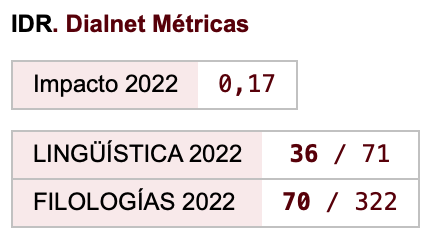Improving English Oral Skills through Pair Work and Peer-Peer Dialogue
Palabras clave:
classroom research, foreign language teaching-learning, tandems, PrimaryResumen
The importance of the English language in today’s Education system is beyond doubt. Bearing in mind that the Spanish Educational Authorities and regulations advocate the Communicative Approach, this study shows the origin, evolution and results of an innovation project carried out in the English classes at the 4th, 5th and 6th grades of Primary in a state school in the autonomous community of Valencia (Spain). For that, the authors-teachers employed the methods of action research approach, pair work and peer-peer dialogue supported by the Communicative Approach and collaborative work.
The results will demonstrate the different advantages of employing pair work and peer-peer activities within the classroom not only to improve children’s English oral skills but also to contribute to their own personal growth and their development as social citizens.
Descargas
Citas
Baleghizadeh, S. (2009). Investigating the Effectiveness of Pair Work on a Conversational Cloze Task in EFL Classes. TESL Reporter, 42(2), 1-12.
Council of Europe (2001). Common European Framework of Reference for Languages. Cambridge: Cambridge University Press.
Crystal, D. (2003). English as a Global Language. Cambridge: Cambridge University Press.
Decreto 111/2007, de 20 de julio, del Consell, por el que se establece el currículo de la Educación Primaria en la Comunitat Valenciana [2007/9730]. July, 20th 2007. Diari Oficial de la Comunitat Valenciana, 5562.
Decreto 108/2014, de 4 de julio, del Consell, por el que se establece el currículo y desarrolla la ordenación general de la educación primaria en la Comunitat Valenciana [2014/6347]. July, 4th 2014. Diari Oficial de la Comunitat Valenciana, 7311.
Denscombe, M. (2010). The Good Research Guide: For Small-Scale Social Research Projects. Berkshire: Open University Press.
Equihua, L., Borja, V., Ramírez, A., & Treviño, A. (2011). Education under Product/Project Oriented Learning Technic, an Academic Experience Under Multidisciplinary and Collaborative Work Environment. INTED2011 Proceedings, 2504-2510.
European Commission (2005). Eurobarometer 231 – Wave 63.4. Retrieved from http://ec.europa.eu/public_opinion/archives/ebs/ebs_237.en.pdf
European Commission (2006): Special Eurobarometer 243 – 64.3. Retrieved from http://ec.europa.eu/public_opinion/archives/ebs/ebs_243_en.pdf
Gass, S., & Mackey, A. (2006). Input, Interaction and Output. AILA Review, 19, 3-17.
Gordillo Santofimia, L. M. (2011). Desarrollo de la comunicación oral en la clase de inglés. Revista digital: Innovación y experiencias educativas, 38, 1-9.
Lantolf, J. P., & Thorne, S. L. (2006). Sociocultural Theory and the Genesis of Second Language Development. Oxford: Oxford University Press.
Ley Orgánica 2/2006, de 3 de mayo, de Educación. May, 3rd 2006. Boletín Oficial del Estado, 106.
Morrow, K. (2012). Communicative Language Testing. In C. Coombe, P. Davidson, B. O’Sullivan & S. Stoynoff (Ed.), The Cambridge Guide to Second Language Assessment (pp. 140-146). New York: Cambridge University Press.
Rubio Alcalá, F. D., & Martínez Lirola, M. (2008). La comunicación oral del inglés en España: Influencia de los aspectos educativos y mediáticos en el éxito de aprendizaje. Porta Linguarum, 32, 51-63.
Sato, M., & Ballinger, S. (2010). Raising Language Awareness in Peer Interaction: A Cross-Context, Cross-Methodology Examination. Language Awareness, 21(1-2), 157-179.
Schmid, E. C. (2010). Developing Competencies for Using the Interactive Whiteboard to Implement Communicative Language Teaching in the English as a Foreign Language Classroom. Technology, Pedagogy and Education, 19(2), 159-172.
Storch, N., & Aldosari, A. (2013). Pairing Learners in Pair Work Activity. Language Teaching Research, 17(1), 31-48.
Susman, G. (1983). Action Research: A Sociotechnical Systems Perpective. In G. Morgan (Ed.), Beyond Method: Strategies for Social Science Research (pp. 95-113). London: Sage Publications.
Swain, M. (2000). The Output Hypothesis and Beyond: Mediating Acquisition through Collaborative Dialogue. In J. Lantolf (Ed.), Sociocultural Theory and Second Language Learning (pp. 97-114). Oxford: Oxford University Press.
Swain, M., Brooks, L., & Tocalli-Beller, A. (2002). Peer-Peer Dialogue as a Means of Second Language Learning. Annual Review of Applied Linguistics, 22, 171-185.
Taylor, L., & Wigglesworth, G. (2009). Ate Two Heads Better than One? Pair Work in L2 Assessment Contexts. Language Testing, 26(3), 325-339.
Watanabe, Y., & Swain, M. (2007). Effects of Proficiency Differences and Patterns of Pair Interaction on Second Language Learning: Collaborative Dialogue between Adult ESL Learners. Language Teaching Research, 11(2), 121-142.
Zeng, G., & Takatsuka, S. (2009). Text-Based Peer-Peer Collaborative Dialogue in a Computer-Mediated Learning Environment in the EFL Context. System, 37, 434-446.
Descargas
Publicado
Cómo citar
Número
Sección
Licencia
Aquellos autores/as que tengan publicaciones con esta revista, aceptan los términos siguientes:
- Los autores/as conservarán sus derechos de autor y garantizarán a la revista el derecho de primera publicación de su obra, el cuál estará simultáneamente sujeto a la Licencia de reconocimiento de Creative Commons que permite a terceros compartir la obra siempre que se indique su autor y su primera publicación esta revista.
- Los autores/as podrán adoptar otros acuerdos de licencia no exclusiva de distribución de la versión de la obra publicada (p. ej.: depositarla en un archivo telemático institucional o publicarla en un volumen monográfico) siempre que se indique la publicación inicial en esta revista.
- Se permite y recomienda a los autores/as difundir su obra a través de Internet (p. ej.: en archivos telemáticos institucionales o en su página web) antes y durante el proceso de envío, lo cual puede producir intercambios interesantes y aumentar las citas de la obra publicada. (Véase El efecto del acceso abierto).

Revista de Lenguas para fines específicos is licensed under a Creative Commons Reconocimiento-NoComercial-SinObraDerivada 4.0 Internacional License.























